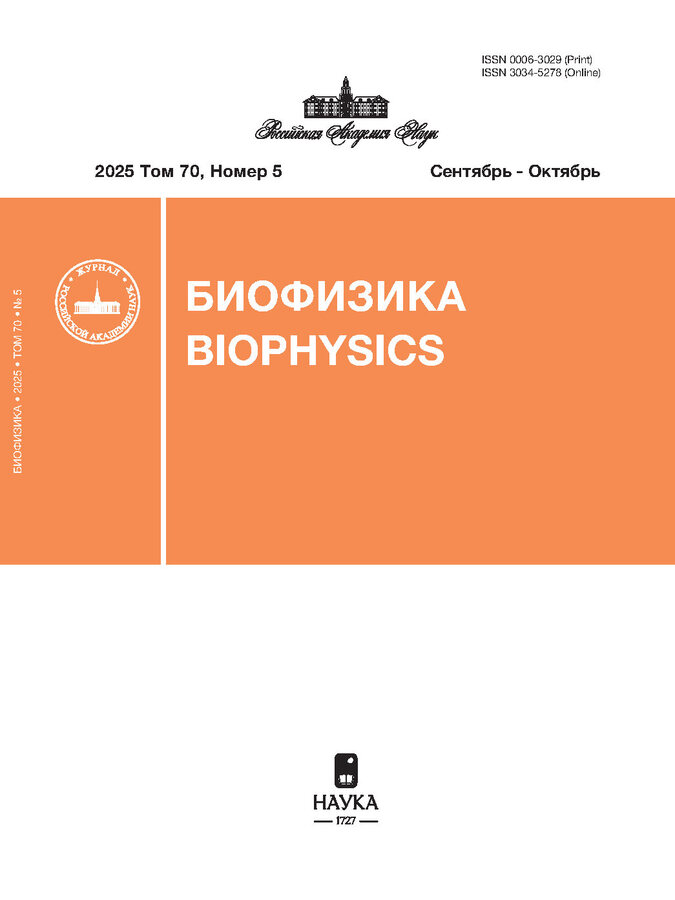Структурно-функциональная оценка состояния раны с применением свч-диэлектрометрии и лазерной
- Авторы: Мартусевич А.К1,2, Суровегина А.В1,2, Назаров В.В1, Федотова А.С1
-
Учреждения:
- Приволжский исследовательский медицинский университет Минздрава России
- Нижегородский государственный агротехнологический университет
- Выпуск: Том 68, № 5 (2023)
- Страницы: 1081-1087
- Раздел: Статьи
- URL: https://journals.rcsi.science/0006-3029/article/view/233486
- DOI: https://doi.org/10.31857/S0006302923050290
- EDN: https://elibrary.ru/NBBWQP
- ID: 233486
Цитировать
Полный текст
Аннотация
Об авторах
А. К Мартусевич
Приволжский исследовательский медицинский университет Минздрава России;Нижегородский государственный агротехнологический университет
Email: cryst-mart@yandex.ru
Нижний Новгород, Россия
А. В Суровегина
Приволжский исследовательский медицинский университет Минздрава России;Нижегородский государственный агротехнологический университетНижний Новгород, Россия
В. В Назаров
Приволжский исследовательский медицинский университет Минздрава РоссииНижний Новгород, Россия
А. С Федотова
Приволжский исследовательский медицинский университет Минздрава РоссииНижний Новгород, Россия
Список литературы
- С. А. Паршикова и В. В. Паршиков, Соврем. проблемы науки и образования, № 2, 64 (2012).
- F. C. Kao, H. H. Ho, P. Y. Chiu, et al., Sci. Technol. Adv. Mater., 23 (1), 1 (2022).
- M. Shafiq, Y. Chen, R. Hashim, et al., Front. Bioeng. Biotechnol., 9, 821288 (2021).
- H.N. Wilkinson, M.J. Hardman. Open Biol. 10 (9), 200223 (2020).
- Г. М. Кавалерский, А. Д. Ченский, А. В. Уездовский и др., Анналы хирургии, № 6, 37 (2012).
- М. Б. Петрова, Е. М. Мохов, А. Н. Сергеев и Е. В. Серов, Соврем. проблемы науки и образования, № 6 (2015).
- С. Я. Ивануса, Б. В. Рисман и Г. Г. Иванов. Вестн. росс. воен.-мед. академии, 2, 190 (2016).
- Е. Б. Богомолова, А. К. Мартусевич, И. А. Клеменова и др., Медицина, 5 (3), 58 (2017).
- А. К. Мартусевич, Д. В. Янин, Е. Б. Богомолова и др., Биомед. радиоэлектроника, 12, 3 (2017).
- S. Li, A. H. Mohamedi, J. Senkowsky, et al., Adv. Wound Care (New Rochelle), 9 (5), 245 (2020). 1087
- С. Н. Колесов и М. Г. Воловик. Оптич. журн., 86 (6), 59 (2013).
- И. В. Турчин. Усп. физич. наук, 186 (5), 550 (2016).
- A. K. Martusevich, S. Yu. Krasnova, A. G. Galka, et al., Biophysics, 64 (4), 610 (2019).
- J. Liu, L. Xu, D. Hu, et al., Zhonghua Shao Shang Za Zhi, 30 (2), 175 (2014).
- A. G. Galka, A. K. Martusevich, D. V. Yanin, and A. V. Kostrov, J.Commun. Technol. Electronics, 65 (9), 1038 (2020).
- А. К. Мартусевич, А. А. Епишкина, Е. С. Голыгина и др., Соврем. технологии в медицине, 12 (5), 57 (2020).
- A. V. Kostrov, A. I. Smirnov, D. V. Yanin, et al., Bull.Rus. Acad. Sci.: Physics, 69 (12), 1911 (2005).
- Д. В. Янин, А. Г. Галка, А. И. Смирнов и др., Журн. радиоэлектроники, № 1, 20 (2015).
- Д. В. Янин, А. Г. Галка, А. И. Смирнов идр., Усп. прикл. физики, 6 (2), 555 (2014).
- Y. Hayashi, N. Miura, N. Shinyashiki, and S. Yagihara, Phys. Med. Biol., 50 (4), 599 (2005).
- A. N. Reznik and N. V. Yurasova, Tech. Phys., 49 (4), 485 (2004).
- А. И. Крупаткин и В. В. Сидоров, Лазерная допплеровская флоуметрия микроциркуляции крови (Медицина, М., 2005).
- A. A. Kouadio, F. Jordana, N. J. Koffi, et al., Arch. Oral Biol., 86, 58 (2018).
Дополнительные файлы










